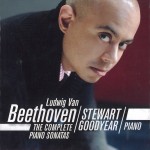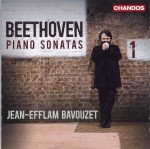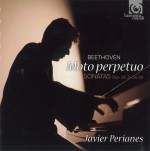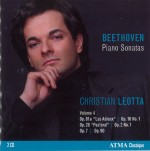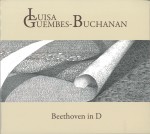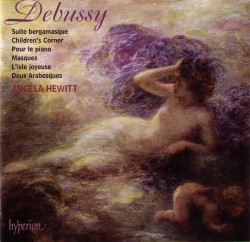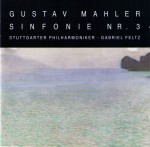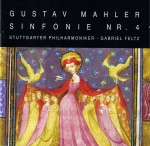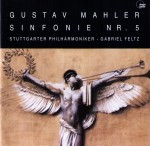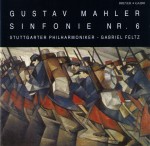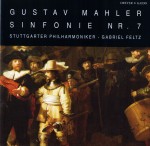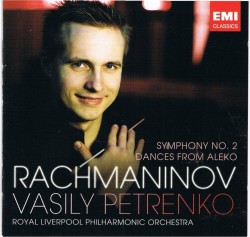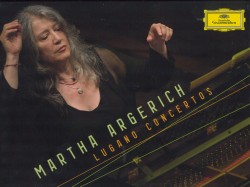Violinist Jacques Israelievitch has been active with a solo and chamber career since stepping down from his 20-year stint as concertmaster of the Toronto Symphony Orchestra in 2008. He has compiled a fascinating CD catalogue on the Fleur de Son Classics label over the past 12 years, and two new issues were received this month. Well, one new issue and one not quite so new, by the look of it.
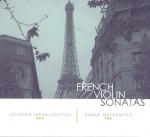 French Violin Sonatas (FDS 58005), in which Israelievitch is ably accompanied by the outstanding pianist Kanae Matsumoto, is certainly new – it’s scheduled for release on November 13 and at the time of writing is not even listed on the label’s website – but it was recorded more than two years ago at the Chautauqua Institution in New York state. Israelievitch is, not surprisingly, very comfortable with these four works from his native country. He has a quite distinctive style, with a gentleness and a sweet softness to his playing that makes the violin very much a feminine instrument in his hands. That’s not to say that it lacks intensity or strength, though, as the spiky opening of the lovely Poulenc sonata proves.
French Violin Sonatas (FDS 58005), in which Israelievitch is ably accompanied by the outstanding pianist Kanae Matsumoto, is certainly new – it’s scheduled for release on November 13 and at the time of writing is not even listed on the label’s website – but it was recorded more than two years ago at the Chautauqua Institution in New York state. Israelievitch is, not surprisingly, very comfortable with these four works from his native country. He has a quite distinctive style, with a gentleness and a sweet softness to his playing that makes the violin very much a feminine instrument in his hands. That’s not to say that it lacks intensity or strength, though, as the spiky opening of the lovely Poulenc sonata proves.
The rarely-heard sonata by Gabriel Pierné is a cyclical, post-Franck work from 1900 that apparently did much to establish the violin sonata as a serious chamber music form in a French music world that was dominated by opera.
The Debussy sonata was the last work that the composer was to complete; the 1917 premiere with the young violinist Gaston Poulet was also Debussy’s last public performance. There’s a direct link here: in 1944 Poulet became a professor at the Paris Conservatoire, where one of his future pupils would be a certain Jacques Israelievitch.
A fine performance of the Ravel sonata completes a fascinating CD, beautifully presented in a glossy digi-pack.
The New Arts Trio has been the trio-in-residence at the Chautauqua Institution since 1978. Pianist Rebecca Penneys is the only original member; cellist Arie Lipsky joined in 1996 and Jacques Israelievitch in 1999.
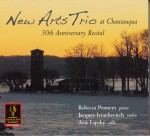 Their 30th Anniversary Recital is available on New Arts Trio at Chautauqua (FDS 58000), just received but apparently issued in 2010. There are solid if not spectacular performances of Dvořák’s “Dumky” Piano Trio and Astor Piazzolla’s Primavera Porteña, along with two works written for the Trio in 2008 – Michael Colina’s Idoru and Ella Milch-Sheriff’s Credo. The Dumky is by far the major work here, though, both in content and in length.
Their 30th Anniversary Recital is available on New Arts Trio at Chautauqua (FDS 58000), just received but apparently issued in 2010. There are solid if not spectacular performances of Dvořák’s “Dumky” Piano Trio and Astor Piazzolla’s Primavera Porteña, along with two works written for the Trio in 2008 – Michael Colina’s Idoru and Ella Milch-Sheriff’s Credo. The Dumky is by far the major work here, though, both in content and in length.
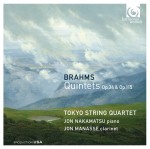 The Brahms Clarinet Quintet has long been one of my favourite works, and you can usually tell within the first few bars what sort of performance it’s going to be. The greatest praise I can give the performance by the Tokyo String Quartet with clarinettist Jon Manasse on the new harmonia mundi CD Brahms Quintets Op.34 & Op.115 (HMU 807558) is that after the opening bars I wrote “Glorious opening – wistful, warm, autumnal – clarinet tone just right – strings beautifully judged” and then spent the next 38 minutes basking in as engrossing and satisfying a performance of this wonderful work as I can remember.
The Brahms Clarinet Quintet has long been one of my favourite works, and you can usually tell within the first few bars what sort of performance it’s going to be. The greatest praise I can give the performance by the Tokyo String Quartet with clarinettist Jon Manasse on the new harmonia mundi CD Brahms Quintets Op.34 & Op.115 (HMU 807558) is that after the opening bars I wrote “Glorious opening – wistful, warm, autumnal – clarinet tone just right – strings beautifully judged” and then spent the next 38 minutes basking in as engrossing and satisfying a performance of this wonderful work as I can remember.
The same high standard continues with the Piano Quintet, Op.34 where the Tokyo Quartet is joined by Jon Nakamatsu in another perfectly-judged performance. Again one to cherish.
Sometimes, as a reviewer, you just stop listening critically and simply get lost in the performances. That’s what happened here, and what can possibly top that?
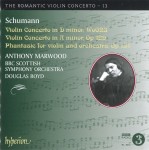 The excellent Hyperion series The Romantic Violin Concerto reaches Volume 13 with another outstanding CD, this time featuring Anthony Marwood and the BBC Scottish Symphony Orchestra under Douglas Boyd in the Schumann Violin Concertos in D Minor and A Minor – the latter a direct transcription by the composer of his Cello Concerto – and the Phantasie in C Major (CDA67847).
The excellent Hyperion series The Romantic Violin Concerto reaches Volume 13 with another outstanding CD, this time featuring Anthony Marwood and the BBC Scottish Symphony Orchestra under Douglas Boyd in the Schumann Violin Concertos in D Minor and A Minor – the latter a direct transcription by the composer of his Cello Concerto – and the Phantasie in C Major (CDA67847).
There seems to be renewed interest in these works, which for many years – until 1937 for the D Minor and 1987 for the A Minor – remained unplayed and unheard; this is the second set I’ve received in just over a year, following Ulf Wallin’s meticulously researched performances on the BIS label, reviewed in September 2011.
Marwood, as usual, is simply outstanding in this, his third contribution to the highly acclaimed series.
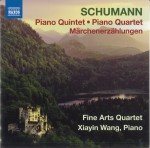 There is more Schumann, this time the Piano Quartet, Piano Quintet and the Märchenerzählungen, on a new Naxos CD by the Fine Arts Quartet with Xiayin Wang on piano (8.572661).
There is more Schumann, this time the Piano Quartet, Piano Quintet and the Märchenerzählungen, on a new Naxos CD by the Fine Arts Quartet with Xiayin Wang on piano (8.572661).
The Quartet and Quintet were written in 1842, Schumann’s “year of chamber music”, and are given the level of performance you would expect from musicians of this standing. The Fine Arts, after all, have been around since 1946, although obviously none of the current players is an original member. Until just last year, however, three of the four members – the two violinists and the cellist – had been together for 30 years.
The Märchenerzählungen (Fairy Tale Narrations) Op.132 was written in 1853, a mere four months before Schumann’s failed suicide attempt, although there is nothing in the music to suggest this. It is a work that is new to me, and is played here in Schumann’s optional version for Violin, Viola and Piano, the violin replacing the clarinet of the original. Quartet members Ralph Evans and Nicoló Eugelmi join Wang in bringing out all the warmth of these four charming pieces.
The recordings were made two years ago (apparently it often seems to take a long time for CDs to reach the market). Since then cellist Wolfgang Laufer has been replaced by Robert Cohen.
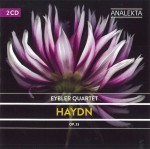 The six string quartets of Haydn’s Op.33 are featured on a new 2CD set from Analekta in performances by the Eybler Quartet (AN 2 9842-3). The performers – violinists Aisslinn Nosky and Julia Wedman, violist Patrick Jordan and cellist Margaret Gay – are all well-known on the Canadian early music scene through their affiliation with groups such as Tafelmusik and I Furiosi, so there’s no doubting that we are in good hands here from a stylistic point of view.
The six string quartets of Haydn’s Op.33 are featured on a new 2CD set from Analekta in performances by the Eybler Quartet (AN 2 9842-3). The performers – violinists Aisslinn Nosky and Julia Wedman, violist Patrick Jordan and cellist Margaret Gay – are all well-known on the Canadian early music scene through their affiliation with groups such as Tafelmusik and I Furiosi, so there’s no doubting that we are in good hands here from a stylistic point of view.
On first hearing, I did find the tone to be a bit thin, but then for me it’s the usual question of competing balances with period performances: purity of tone versus a thinness of sound; lack of – or sparingly used – vibrato versus a lack of warmth. It all comes down to a matter of personal taste, and if you’re used to a fuller sound in your Haydn quartets – even if it’s not really appropriate – then this might not be for you. There is no doubting, however, that these are highly enjoyable, technically sound performances and idiomatic interpretations, lovingly played and beautifully recorded at Glenn Gould Studio in Toronto.
The order of the individual quartets is a bit strange, given that the timings for the six works don’t vary that much and the keys are all different: CD1 has quartets five, one and six, while CD2 has quartets two, four and three.
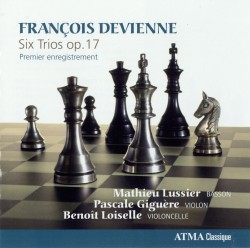 Devienne - Six Trios, Op.17
Devienne - Six Trios, Op.17

